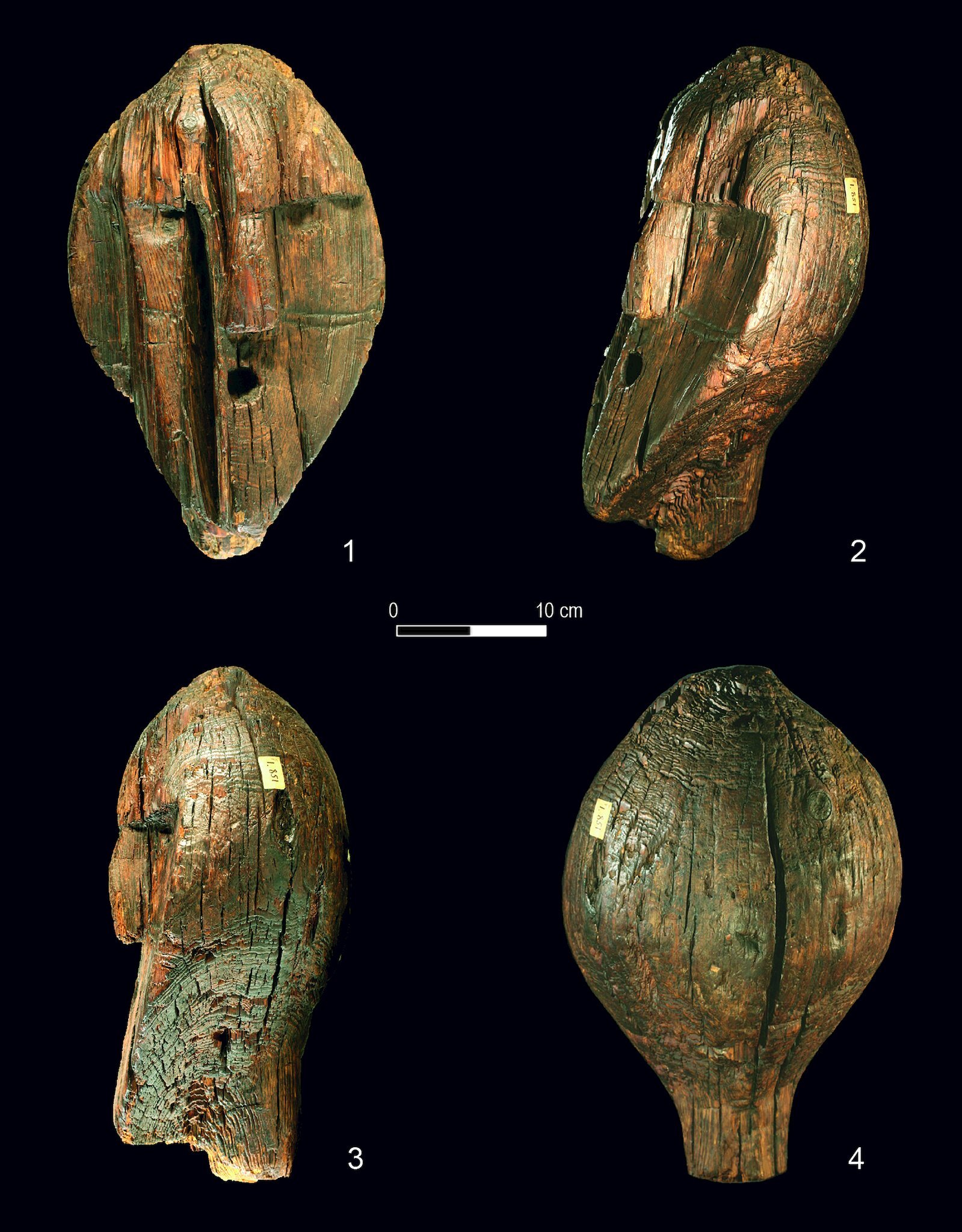
The Shigir Idol is nothing short of a miracle of preservation. A nine-foot-tall totem pole in 10 fragments decorated in geometric carvings and imposing human faces, it is the world’s oldest wooden sculpture, as well as its only surviving Stone Age wooden artifact.
Thanks to new research, scientists now suspect it is even older than we thought—and it may change our understanding of prehistoric society.
Found in a peat bog by gold miners in 1890, the idol is the jewel of the collection at the Sverdlovsk Regional Museum of Local Lore, a remote institution in Russia’s Ural Mountains. Its age remained a mystery even to experts until 1997, when Russian scientists using radiocarbon dating found that it was 9,500 years old. The unexpected find initially prompted skepticism from some experts, given the sophisticated nature of the piece, now believed to be the earliest known ritual art.
In 2018, more advanced accelerator mass spectrometry technology testing the pristine core of the larch wood statue—rather than the surface, which had undergone numerous conservation treatments over the more than 100 years since its discovery—determined that it was actually even older: closer to 11,600 years old.
Now, a new study published in Quaternary International has pushed that date back by a further 900 years—making it more than twice as old as Stonehenge or the Egyptian pyramids.
A modern drawing of the Shigir Idol with scale, left, and details of the geometric decoration on individual fragments. Photo courtesy of the Sverdlovsk Regional Museum.
“The idol was carved during an era of great climate change, when early forests were spreading across a warmer late glacial to postglacial Eurasia,” the paper’s lead author, archaeologist Thomas Terberger, the head of research at the Department of Cultural Heritage of Lower Saxony, in Germany, told the New York Times. “The landscape changed, and the art—figurative designs and naturalistic animals painted in caves and carved in rock—did, too, perhaps as a way to help people come to grips with the challenging environments they encountered.”
The statue’s complex iconography, with its abstract symbols, defies what archaeologists believed they knew about the hunter-gatherer societies in Europe and Asia, whose artistic output was thought to be limited to animal images and hunting scenes, not objects with ritual significance.
But it’s quite possible that the vast majority of “mobiliary art”—the archaeological term for portable prehistoric sculpture—simply didn’t survive because of the materials used to make it.
An early reconstruction of the Shigir Idol from 1894. Photo courtesy of the Sverdlovsk Regional Museum.
In regions with large forests, wood would have been readily available to Paleolithic artists, but quick to deteriorate over the centuries. That means that our understanding of these ancient peoples is shaped by preservation biases, and might have been very different had more wooden artifacts like the Shigir Idol survived.
“Wood working was probably widespread during the Late Glacial to early Holocene,” the paper argues. “We see the Shigir sculpture as a document of a complex symbolic behavior and of the spiritual world of the Late Glacial to Early Mesolithic hunter-gatherers of the Urals.”
Terberger and his colleagues have turned up more evidence of prehistoric carpentry in other bog excavations over the past 12 years. They expect that archaeologists will continue to uncover similar finds elsewhere in the Urals, which are home to many unexplored peat bogs, but a lack of funding means that there are currently no ongoing excavations.